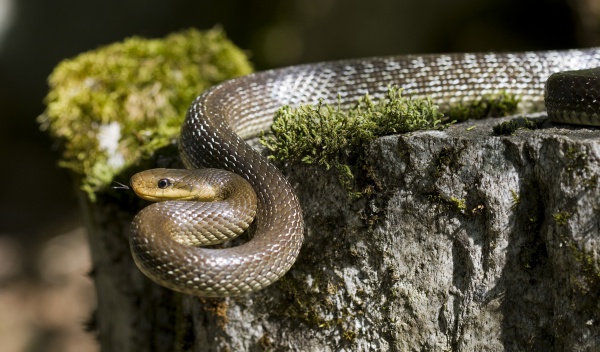Facts About Aesculapian snake
The Aesculapian snake, a non-venomous species native to Europe, belongs to the Colubrinae subfamily within the Colubridae family. Reaching lengths of up to 2 meters, it is one of Europe's largest snakes and holds significant cultural and historical importance, particularly in ancient Greek, Roman, and Illyrian mythology.
Description
Scientifically known as Zamenis longissimus, the Aesculapian snake is long, slender, and boasts a metallic sheen. Juveniles feature a yellow collar around their necks, while adults display more uniform coloration. Their lifespan ranges from 25 to 30 years.
Geographic Range
Aesculapian snakes are distributed across various parts of Europe, including France, Spain, Italy, the Balkan Peninsula, Greece, Asia Minor, and sections of Central and Eastern Europe. Isolated populations exist in Germany, the Czech Republic, Russia, Iran, and Turkey.
Habitat
These snakes favor forested, warm, and moderately humid environments with ample sunlight and diverse vegetation. They thrive in temperate broadleaf forests and forest steppes but avoid open plains and agricultural areas.
Diet and Predators
The diet of the Aesculapian snake mainly comprises rodents, birds, and eggs. They are preyed upon by badgers, foxes, wild boars, birds of prey, and domestic animals. Juvenile snakes are also vulnerable to predation by other snakes.
Behavior
Diurnal in nature, Aesculapian snakes are proficient climbers, even capable of scaling vertical tree trunks. They exhibit territorial behavior and are known to hold their ground when threatened.
Reproduction
Breeding occurs annually following hibernation. Males engage in ritualistic combat to secure mating opportunities. Females lay their eggs in warm, moist environments, where the eggs incubate for about eight weeks before hatching.
Conservation
While not currently endangered, the Aesculapian snake faces threats from habitat destruction and road development, especially in marginal areas of its distribution. Conservation efforts are imperative to protect its core habitats and maintain genetic diversity among populations.
Taxonomy
Recent studies have identified four genetic lineages within the species: Western, Adriatic, Danube, and Eastern haplotypes. The status of the Iranian enclave population remains uncertain.
History
The species has undergone several taxonomic revisions and is presently classified as Zamenis longissimus. Its common name honors the classical god of healing, Asclepius (or Aesculapius), underscoring its historical significance.

 Russia
Russia